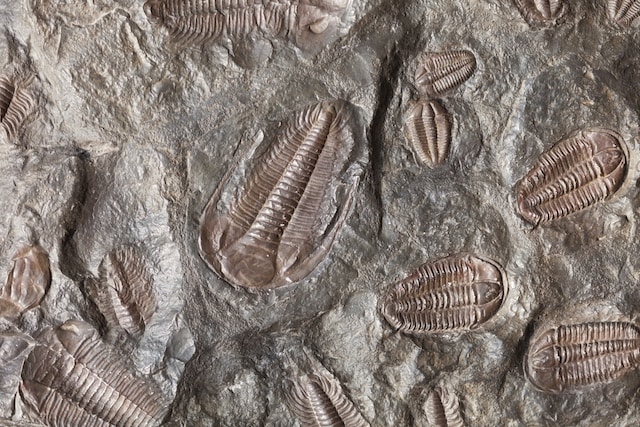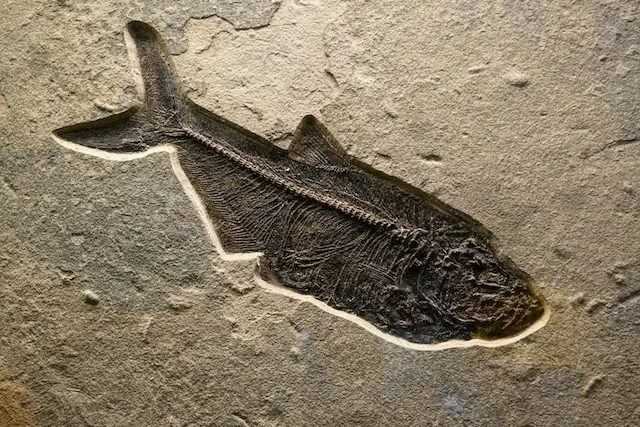Radioactive decay and radiometric dating are two different but related concepts in the field of science. Radioactive decay refers to the process by which a nucleus becomes unstable and breaks down into smaller particles over time. On the other hand, radiometric dating is a technique used to determine the age of materials based on their radioactive properties. Radiometric dating can be used to determine the age of rocks, fossils, and archaeological artifacts, while radioactive decay is primarily studied as a fundamental physical phenomenon.
Radioactive Decay
Radioactive decay is the process by which an unstable atomic nucleus emits particles or energy in order to become more stable. This can happen through a number of different mechanisms, including alpha decay (where an alpha particle consisting of two protons and two neutrons is emitted), beta decay (where a neutron is converted into a proton or vice versa), or gamma decay (where excess energy is released in the form of high-energy photons).
One important thing to note about radioactive decay is that it occurs randomly – there’s no way to predict exactly when any given atom will undergo this process. However, we know from studying large numbers of atoms that there are certain patterns and probabilities involved.
Scientists use our understanding of radioactive decay to do everything from dating rocks and fossils to producing medical isotopes for diagnosing and treating disease. It’s truly amazing how much we’ve been able to learn about the universe around us thanks to this fundamental concept!
Radiometric Dating
(Photo by Wes Warren on Unsplash )

Radiometric dating is a technique used by scientists to determine the age of rocks, fossils and other geological materials. It’s based on the principle that certain radioactive isotopes decay over time at a known rate. By measuring the amount of decay products in a sample, scientists can calculate how long it has been since the material was originally formed.
There are two main types of radiometric dating: absolute and relative. Absolute dating methods use isotopes with longer half-lives to date older samples, while relative methods compare the ratios of different isotopes to determine which sample is older or younger.
One common example of radiometric dating is carbon-14 dating, which uses the decay rate of carbon-14 to estimate the age of organic materials such as plants and animals. Another example is uranium-lead dating, which uses the decay rate of uranium into lead to date rocks and minerals.
Radiometric dating has revolutionized our understanding of Earth’s history and evolution. By accurately determining when different events occurred in geologic time, scientists have been able to piece together a detailed picture of how our planet has changed over billions of years.
Radioactive Decay Vs. Radiometric Dating – Key differences
Radioactive decay and radiometric dating are two different processes that involve the use of radioactive isotopes. While both methods deal with the decay of atoms, they have significant differences.
Radioactive decay refers to the process in which an unstable atom changes into a more stable one by emitting particles or energy. This process occurs naturally in radioactive materials like uranium, thorium, and potassium. The rate at which an isotope decays is measured using its half-life.
Radiometric dating, on the other hand, involves measuring the amount of a parent isotope and its products in a sample to determine how long it has been since the rock or mineral was last heated or exposed to sunlight. Radiometric dating can be used for rocks as well as archaeological artifacts.
One key difference between these two processes is that radioactive decay measures only the change in an atom’s nucleus while radiometric dating determines age based on changes within a larger sample. Another major difference lies in their application – while radioactive decay occurs naturally over time; radiometric dating requires scientists to measure specific isotopes’ concentrations actively.
Understanding these differences between these two methods can help provide insight into how geologists date rocks and minerals accurately. It also helps us understand how we can study Earth’s history by looking at its geological past through science!
What is the difference between radioactive decay and relative dating?
When it comes to understanding the age of rocks and fossils, two methods are often used: radioactive decay and relative dating. While both techniques aim to determine the age of materials, they differ in their approach.
Radioactive decay refers to the process by which unstable atomic nuclei spontaneously break down into more stable forms. This process is accompanied by the emission of radiation in various forms such as alpha, beta or gamma particles. By measuring the rate at which a particular element decays, scientists can determine how long ago a rock or fossil was formed.
On the other hand, relative dating involves determining whether an object is older or younger than another based on its position within specific layers of sedimentary rock. The principle behind this technique is that older layers are generally found beneath newer ones because they were deposited first.
While radioactive decay yields absolute dates (i.e., specific numerical ages), relative dating only provides a general range of possible ages for an object.
In summary, while both methods aim to determine age differences between objects, radioactive decay provides more precise results whereas relative dating gives us a rough idea about when something might have occurred in time.
What are two types of radioactive dating?
There are two types of radioactive dating: Absolute and Relative.
Absolute dating uses the decay rate of a radioactive isotope to determine the age of an object. This method can be used on rocks, minerals, fossils, and archaeological artifacts. One common example is carbon-14 dating, which measures the half-life of carbon-14 in organic materials like bones or wood.
Relative dating relies on comparing the placement and characteristics of different layers or objects in order to estimate their ages relative to each other. This method does not give exact dates but provides a general idea about when something occurred. For example, sedimentary rock layers can be dated by their position in relation to other rock formations.
Both methods have advantages and limitations depending on what type of material is being dated and how accurate scientists need their results to be. However, both provide valuable information for understanding Earth’s history and unlocking clues about our planet’s past.
What is an example of radioactive dating?
One common example of radioactive dating is carbon-14 dating. Carbon-14 is a radioactive form of carbon that can be found in organic materials such as plants and animals. When an organism dies, the amount of carbon-14 begins to decrease through radioactive decay.
Scientists can measure the remaining amount of carbon-14 in a sample and use it to determine how long ago the organism died. This method is commonly used in archaeology to date ancient artifacts and fossils.
Another example of radioactive dating is uranium-lead dating. Uranium decays into lead over time, with a half-life of 4.5 billion years. By measuring the ratio of uranium to lead in a rock sample, scientists can calculate how long ago the rock formed.
This method is often used to determine the age of rocks and minerals that are millions or billions of years old, such as those found in geological formations or on other planets.
There are many different types of radioactive dating methods that allow scientists to accurately determine the ages of various materials based on their rates of decay.
What are some examples of radioactive dating?
There are several examples of radioactive dating, each with its own unique method and purpose. One such example is carbon-14 dating, which is used to determine the age of organic materials.
Carbon-14 dating works by measuring the amount of carbon-14 in a sample and comparing it to the amount of carbon-12. Since carbon-14 decays at a known rate, scientists can use this information to calculate how long ago the organism died.
Another type of radioactive dating is uranium-thorium dating, which is commonly used for geologic samples that are much older than those analyzed using carbon-14. This method relies on the decay chain from uranium to thorium in order to determine an age range for the sample.
Potassium-argon dating is another example and involves measuring the ratio between potassium isotopes present in a rock sample. By determining how much argon has been produced through radioactive decay, scientists can estimate when the rock formed.
There are many different types of radioactive dating methods available today. Each one plays an important role in helping us understand our world’s history and unraveling mysteries about past civilizations or geological events that have shaped our planet over time.
Featured Image By – Jacqueline Martinez on Unsplash








